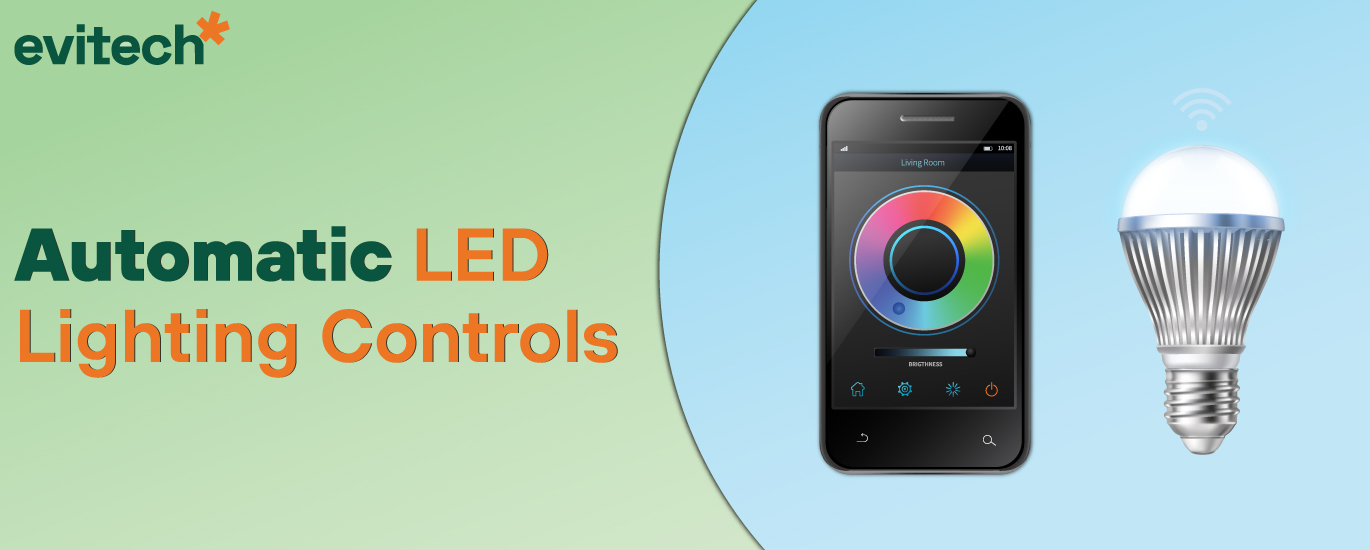Automatic LED Lighting Controls
LED light is a very efficient energy-saving measure. Depending on the bulb replaced, 30% to 90% of lighting costs can be saved. Even more significant savings can be achieved by combining LED lighting with automatic controls.
Automatic controls for LED lighting save electricity in two main ways. They can reduce the time of use of the light bulbs, or they can reduce the light’s intensity, known as “dimming” or attenuation.
In both cases, the total kilowatt-hours consumed in the month can be reduced, which is reflected in the electricity bill.
LED light saves more energy with automatic controls.
Below, we discuss three automatic controls commonly used with LED lighting. It is worth mentioning that these controls also avoid manual switches, which can help prevent the spread of coronavirus or other infectious diseases.
LED Timers or Time Controls
These are the most accessible LED lighting controls. They feature a clock and can be set to activate specific lighting circuits based on the time of day. Due to their simplicity, these light controls also cost less than other options.
Timers are helpful for spaces where the hours of use are known in advance. For example, they can be an effective option for classrooms and offices. However, hourly controls are not effective in areas where occupancy is unpredictable.
These lighting controls can be combined with manual dimmers but cannot automatically dim based on the required light.
Occupancy Sensors for LED Light
Occupancy sensors can detect people’s presence to activate or deactivate lighting. This control method is helpful in spaces where the presence of people is unpredictable, such as restrooms or copy centres.
There are three main types of occupancy sensors: passive infrared (PIR), ultrasonic, and dual technology.
- Infrared sensors detect people by their body heat. They are lower cost than ultrasonic but also require line of sight. These sensors are ineffective when visual obstacles, such as bathroom partitions and cubicles.
- Ultrasonic sensors emit a sound to detect objects, similar to bats. This allows them to detect people when they are behind visual obstacles, but the cost of the sensor is higher than that of an infrared.
To optimize costs, it is recommended to use infrared sensors in all applications where they are suitable. Ultrasonic sensors are only recommended in cases where infrared cannot detect people correctly since their cost is higher.
Occupancy sensors prevent LED bulbs from staying on in empty spaces.
Dimming Controls According to Natural Light
It is possible to combine LED lighting with brightness sensors and automatic dimmers. When natural light is available, LED lamps are not used to their total capacity, and only enough light is provided to reach the required lighting level.
These controls can even turn artificial lighting off in spaces with abundant natural light.
These controls ensure a proper lighting level based on external conditions. On a sunny day with abundant natural light, the use of artificial lighting will be minimal or zero.
When there is cloudiness, the lighting level is increased to compensate for the reduction in natural light. If the respective space is used at night, the LED lighting is used at full power as there is no natural light.
Latest Post
- Why do LED Spotlights Burn?
- What is the electricity consumption of LED Christmas lights?
- What are LED lighting towers, and What are their Applications?
- Using Natural Light in LED Lighting Designs
- Use of LED Lights in Domestic Houses
- Three Ways to Apply LED Light in Buildings
- Savings in Air Conditioning with LED Lighting
- Replacement of Halogen Spotlights by LED
- Recommendations when Buying LED Lights for Cars
- LED Lighting Connected to the Internet: A Promising Technology


